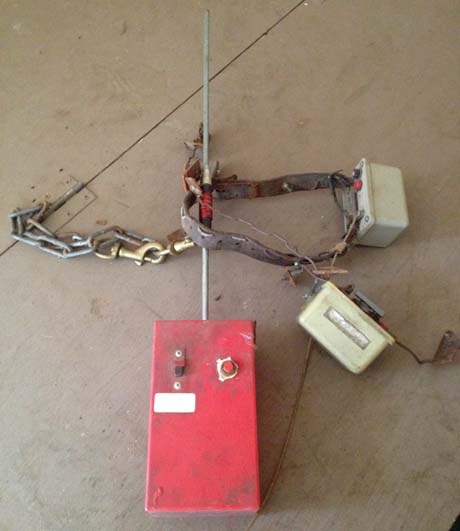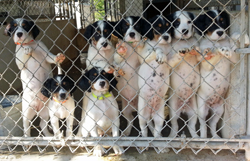Electronic training collars…a little perspective

A decades-old electronic training collar left behind by a previous dog trainer. I found it in the office of our Georgia kennel.
That is a frightening-looking unit that seems more suitable for a Frankenstein movie than for dog training.
But that’s exactly what it is—a TX electronic training collar made by Sensitronix in 1969. I found it in the kennel office of our Georgia training grounds.
The first electronic training collars, often called shock collars, were developed in the 1950s. They were big, bulky and unreliable and could deliver only one, hot level of shock. Their primary use was to break bad habits such as chasing off-game but they were also used as a last resort to bring in a run-off. The high voltage could just as easily ruin a dog as fix a problem.
The electronic training collars of today are as different from older models as are the earliest mobile phones from current, sleek Apple and android devices. Commonly called “ecollars” now, they are extremely reliable and much smaller in size. Most provide two types of stimulation—continuous and momentary—and some offer vibration or tone options. Most importantly, the level of stimulation is highly adjustable and can be modified to the dog’s sensitivity and training situation. The lowest levels are imperceptible to most dogs.
Unfortunately, a stigma remains about the use of ecollars. Some people still believe they are cruel and prefer to train the “old-fashioned way.” Well, that quaint way incorporated some brutal treatment: jerking a dog around on a very long check cord, dragging a dog behind a horse to bring it back where it knocked birds, using a flushing whip, throwing objects and/or peppering the dog with rat shot or 9-shot from a shotgun.
Used properly, today’s ecollars are, by far, the safest, most humane and most effective training tool available. They provide the ability to correct a dog the second it makes a mistake with the lowest level of stimulation necessary and the impersonal capability to correct a dog when working at a distance. Too, at a higher level, a dog learns it has control of the ecollar through its behavior.
As with any tool, though, an ecollar is only as good as the person wielding it. The dog must understand what is expected and must be properly introduced to ecollar stimulation. And the person still must learn the basics of dog training before using an ecollar.




